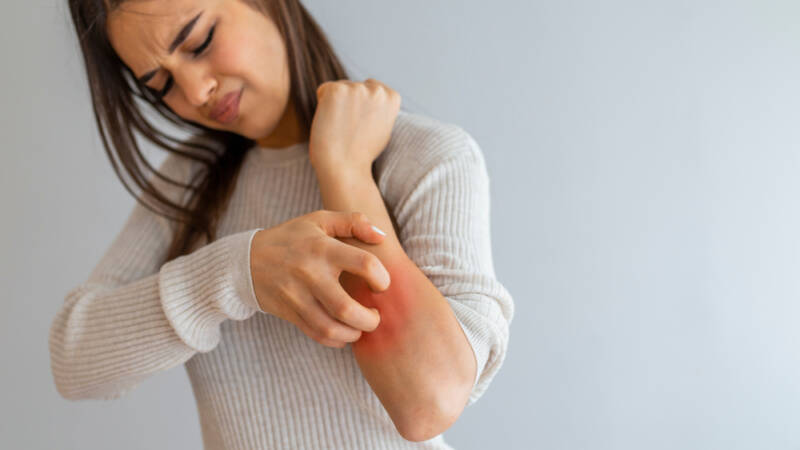Understanding Psoriasis: Triggers and Treatment

Psoriasis is a chronic skin disease that can be very painful if not treated. It’s a fairly common condition, affecting approximately 2 percent of the population or more than eight million people in the United States. Search online and keep reading for more information on this inflammatory skin disease.
While psoriasis may seem like a skin condition, it’s actually an autoimmune disease caused by inflammation. It can affect any part of the body and even lead to other health conditions like psoriatic arthritis.
What Psoriasis Looks and Feels Like
Psoriasis causes red, itchy, scaly patches on the skin due to a build up in skin cells. Normal skin production has a life cycle of about a month, but psoriasis causes skin cells to grow more rapidly. This means that skin cells don’t have time to fall off before being replaced, causing a build up of red or scaly skin.
Other common signs and symptoms include:
- Small scaly spots
- Dry, cracked skin that itches or bleeds
- Itching
- Burning
- Soreness
- Thickened, pitted, or ridged nails
- Swollen, stiff joints
Psoriasis commonly appears on the elbows, knees and scalp, though it can affect the skin anywhere on the body. The size of the patches and extent to which psoriasis covers the body both vary depending on a patient’s unique case.
Symptoms also come and go since the disease goes through cycles, alternating between flares up in symptoms and remission. How long these last also depends on a person’s unique case and the success of their treatment plan.
Psoriasis Triggers
While the exact cause is unknown, both the immune system and genetics seem to play a part. This means that triggers vary from person to person. It can be difficult to know what causes a specific flare in psoriasis, but doctors do know there are a certain factors that can trigger the condition generally. They include:
- Stress
- Certain infections strep throat, bronchitis, and tonsillitis
- Injury to the skin, including tattoos and piercings
- Weather, like changes in humidity and temperature
- Smoking or exposure to secondhand smoke
- Heavy alcohol consumption
- Certain medications for high blood pressure, arthritis, and antimalarial drugs
- Certain foods, including gluten and nightshades
- Hormonal changes
Talk with your doctor if you’re concerned about what may be triggering flare-ups in your unique case.
Treatment Options
Effective treatment slow down skin cell production, remove dead skin cells and minimize or provide reliefs from symptoms. Treatments vary depending on whether a case is mild or more severe. However, the main types are:
Topical Treatments: This type of treatment uses creams and ointments applied on the skin. They often have corticosteroids in them and help treat mild to moderate psoriasis.
Light Therapy: This treatment is recommended for moderate to severe cases and can be use either alone or alongside medication. This method involves a UVA or UVB light source that kills overactive white blood cells and the overproduction of skin cells.
Systemic Medications: This short-term option is used for moderate to severe psoriasis when a patient isn’t responding to other treatments. These medications often have side effects and are either consumed orally or injected.
Psoriasis can stay dormant for several years and something simple can trigger the chronic and painful disease. If you start developing symptoms of psoriasis on your skin, contact your doctor. The quicker you receive a diagnosis and start treatment, the less uncomfortable and painful it will be.